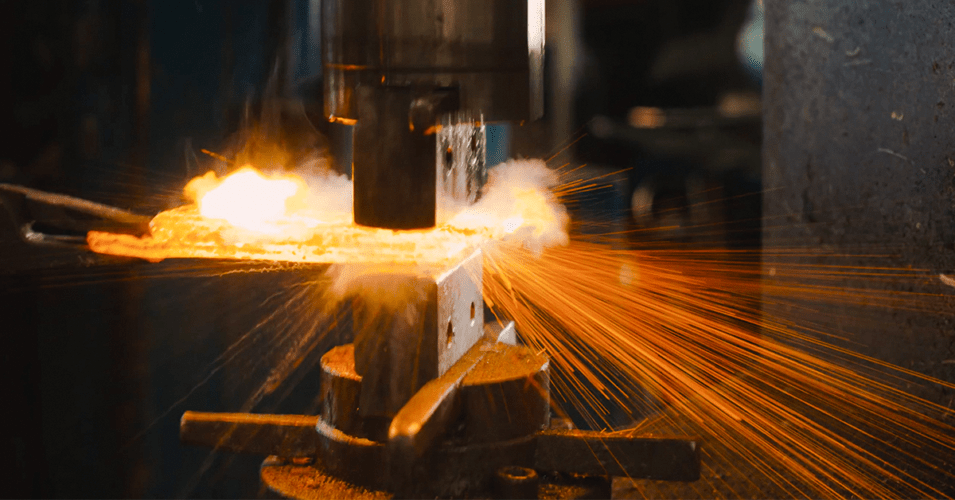When we think of jewelry, we often picture exquisite pieces of artistry and craftsmanship, adorned with sparkling gemstones and intricate designs. While gemstones do play a crucial role in jewelry-making, it’s the base material, often precious metals like gold, silver, and platinum, that form the foundation of these works of art. One of the lesser-known but highly significant processes in jewelry production is hot forging, a technique that involves shaping and transforming these metals at high temperatures to create stunning pieces. In this blog, we will delve into the fascinating world of hot forging in the jewelry industry and explore how it contributes to the creation of unique and cherished adornments.
The Art of Hot Forging
Hot forging, in the context of jewelry manufacturing, is a metalworking process that involves heating a metal to a malleable temperature (typically above its recrystallization temperature) and then shaping it using various tools, such as hammers and dies. This technique allows jewelers to manipulate the metal’s structure, creating intricate designs, textures, and forms that are impossible to achieve through other methods.
Materials of Choice
Precious metals, like gold, silver, and platinum, are the primary materials used in hot forging for jewelry. These metals have been cherished throughout history for their beauty, rarity, and malleability. Each metal offers unique characteristics that influence the final appearance and properties of the jewelry piece.
- Gold: Gold is one of the most popular metals in jewelry-making. Its malleability allows it to be easily shaped and forged into intricate designs. Hot forging of gold can result in stunning textures and patterns, enhancing the overall aesthetics of the piece.
- Silver: Silver is known for its brilliant luster and affordability compared to other precious metals. Hot forging silver can create a wide range of textures and finishes, making it a versatile choice for jewelry artisans.
- Platinum: Platinum is a dense and durable metal that does not tarnish or corrode. Hot forging platinum requires higher temperatures and specialized equipment due to its high melting point, but it can result in exceptionally strong and elegant jewelry pieces.
The Hot Forging Process
The hot forging process in jewelry-making involves several key steps:
- Heating: The chosen metal is heated to its ideal forging temperature, which can vary depending on the specific metal and desired outcome. This temperature is typically above the metal’s recrystallization temperature, allowing it to become more malleable.
- Shaping: Once heated, the jeweler uses various tools, including hammers and dies, to shape the metal. These tools can create intricate textures, patterns, and forms, turning a simple piece of metal into a work of art.
- Annealing: As the metal cools, it may become brittle. To restore its malleability and prevent cracking, it is often annealed (heated again and allowed to cool slowly).
- Finishing: After the forging process is complete, the jewelry piece is often polished, engraved, and set with gemstones to enhance its beauty and value.
Advantages of Hot Forging in Jewelry-Making
Hot forging offers several advantages in the creation of jewelry:
- Customization: It allows jewelers to create unique and personalized designs that cater to the individual tastes of their customers.
- Durability: Forged jewelry tends to be stronger and more durable than cast jewelry, making it suitable for everyday wear.
- Texture and Detail: Hot forging allows for the creation of intricate textures and patterns, adding depth and character to jewelry pieces.
- Artistic Expression: Jewelry artisans can use hot forging to express their artistic vision, resulting in one-of-a-kind pieces that tell a story.
Hot forging in the jewelry industry is a testament to the marriage of art and science. It’s a technique that transforms ordinary precious metals into extraordinary pieces of wearable art. Whether it’s the delicate filigree work of a gold ring or the intricate texture of a silver pendant, hot forging adds a level of craftsmanship and customization that distinguishes fine jewelry. The next time you admire a beautiful piece of jewelry, take a moment to appreciate the intricate process that went into crafting it, and you’ll gain a deeper understanding of the artistry that lies within the jewelry industry.





